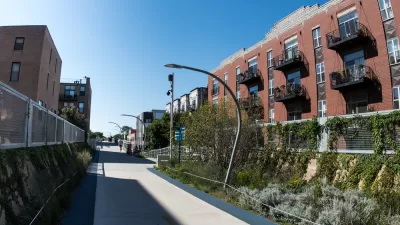Emily Badger discusses a phenomenon of gentrification in Chicago: former single room occupancy hotels, historically reserved for low-income housing, are being converted into market-rate rentals.
In the latest news in the affordability crisis of cities across the United States, Emily Badger of The Washington Post delves into a stark phenomenon in Chicago—the sale and redevelopment of single room occupancy (SRO) hotels into market-rate housing. Under this adaptive reuse business model, the SRO hotel is sold, remodeled to include a private bathroom and kitchens instead of communal facilities, and sold at market-rate prices for rooms ranging from 250-350 square feet.
Economically speaking, the purchase and redevelopment of these hotels into affordable housing is not feasible. According to Badger, "[the] cost of utilities, paid by owners, not tenants, has been rising. So have property taxes. These buildings are more expensive to operate than traditional apartments because they typically have on-site staff, and the greater tenant turnover causes more wear on units. They also often need costly repairs just to bring them up to code."
To address the flipping of SROs, the city of Chicago passed an ordinance earlier this week requiring SRO owners to "attempt six months of good-faith negotiations with a buyer on behalf of the tenants. If that falls through, though, owners then have a window of 120 days when they can try to find a buyer without any affordability restrictions. If they want to opt out of the whole process, the fees are now smaller but still substantial: Developers who wants to turn a 100-unit SRO into 100 market-rate studios would owe the city $2 million. And they’d owe each displaced tenant relocation fees between $2,000-$10,600."
Since 2011, 2,000 units of SRO hotels have been bought by developers and flipped, while only 6,000 SRO units remain today in Chicago.
FULL STORY: What happens when housing for the poor is remodeled as luxury studios

Manufactured Crisis: Losing the Nation’s Largest Source of Unsubsidized Affordable Housing
Manufactured housing communities have long been an affordable housing option for millions of people living in the U.S., but that affordability is disappearing rapidly. How did we get here?

Americans May Be Stuck — But Why?
Americans are moving a lot less than they once did, and that is a problem. While Yoni Applebaum, in his highly-publicized article Stuck, gets the reasons badly wrong, it's still important to ask: why are we moving so much less than before?

Using Old Oil and Gas Wells for Green Energy Storage
Penn State researchers have found that repurposing abandoned oil and gas wells for geothermal-assisted compressed-air energy storage can boost efficiency, reduce environmental risks, and support clean energy and job transitions.

Updating LA’s Tree Rules Could Bring More Shade to Underserved Neighborhoods
A new USC study finds that relaxing Los Angeles’ outdated tree planting guidelines could significantly expand urban tree canopy and reduce shade disparities in lower-income neighborhoods, though infrastructure investments are also needed.

California's Canal Solar Projects Aim to Conserve Resources and Expand Clean Energy
California’s Project Nexus has begun generating electricity from solar panels installed over irrigation canals, with researchers and state agencies exploring statewide expansion to conserve water and boost clean energy production.

HHS Staff Cuts Gut Energy Assistance Program
The full staff of a federal program that distributes heating and cooling assistance for low-income families was laid off, jeopardizing the program’s operations.
Urban Design for Planners 1: Software Tools
This six-course series explores essential urban design concepts using open source software and equips planners with the tools they need to participate fully in the urban design process.
Planning for Universal Design
Learn the tools for implementing Universal Design in planning regulations.
Heyer Gruel & Associates PA
City of Moreno Valley
Institute for Housing and Urban Development Studies (IHS)
City of Grandview
Harvard GSD Executive Education
Salt Lake City
NYU Wagner Graduate School of Public Service
City of Cambridge, Maryland





























